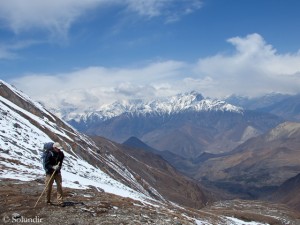Sought: Himalayan Mountain Hut
As in the Alps, mountaineers in the Himalayas shall soon find shelter in mountain huts. Not in simple wooden or metal sheds. The new huts shall be functional, low maintenance, not too expensive, but, please, also nice and comfortable. The Nepal Mountaineering Association (NMA), in cooperation with the Nepalese development programme Samarth, announced a competition for architects and designers to find “an innovative high altitude accommodation unit which will be the first of its kind ever to be established in Nepal”.
Sustainable
The mountain hut has to be “resistant to the elements of heat, cold, rain, snow and wind”, the organizers of the competition say. The hut shall provide “comfortable shelter” for ten to 20 people who must be able to stay there for several days due to lousy weather. It must have enough storage room for climbing equipment such as ropes or harnesses and has to supply electricity and drinking water in a sustainable way. It must to be suited for self-catering as well as a mountain hut with staff, kitchen and a small shop. The competition’s closing date for registration is 1 April, for submission 10 April. The winner will be announced on 30 April and will receive a prize money of US $ 5,000. The 13-member-jury consists of architects e.g. from the USA, UK, France, Hong Kong and Singapore, but strangely enough not from Nepal.
All over Nepal
The first hut is to be built at 5896-meter-high Paldor Peak, a popular trekking peak in the massif of Ganesh Himal, north-west of the Nepalese capital Kathmandu. The ultimate goal is to replicate the winning hut model “in all parts of the country along the Himalayas”. In taking this action, the Nepal Mountaineering Association probably responds to allegations following the heavy snow storms in mid-October that killed about 30 people in the area around the eight-thousander Annapurna, including many trekkers. At the time, critics raised the issue that there had been no refuges in the affected areas along the Annapurna Circuit.









